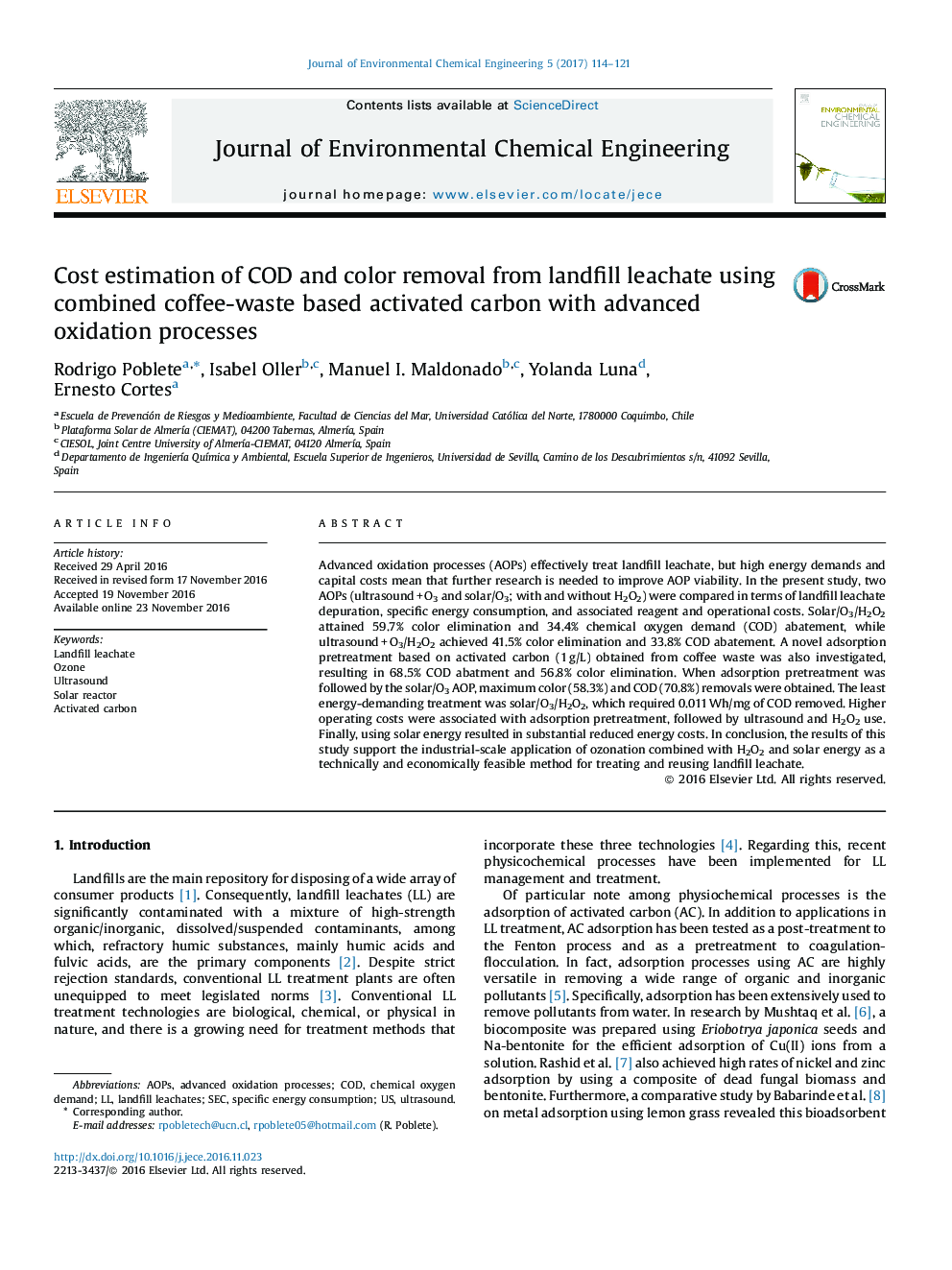| Article ID | Journal | Published Year | Pages | File Type |
|---|---|---|---|---|
| 6477280 | Journal of Environmental Chemical Engineering | 2017 | 8 Pages |
Advanced oxidation processes (AOPs) effectively treat landfill leachate, but high energy demands and capital costs mean that further research is needed to improve AOP viability. In the present study, two AOPs (ultrasound + O3 and solar/O3; with and without H2O2) were compared in terms of landfill leachate depuration, specific energy consumption, and associated reagent and operational costs. Solar/O3/H2O2 attained 59.7% color elimination and 34.4% chemical oxygen demand (COD) abatement, while ultrasound + O3/H2O2 achieved 41.5% color elimination and 33.8% COD abatement. A novel adsorption pretreatment based on activated carbon (1 g/L) obtained from coffee waste was also investigated, resulting in 68.5% COD abatment and 56.8% color elimination. When adsorption pretreatment was followed by the solar/O3 AOP, maximum color (58.3%) and COD (70.8%) removals were obtained. The least energy-demanding treatment was solar/O3/H2O2, which required 0.011 Wh/mg of COD removed. Higher operating costs were associated with adsorption pretreatment, followed by ultrasound and H2O2 use. Finally, using solar energy resulted in substantial reduced energy costs. In conclusion, the results of this study support the industrial-scale application of ozonation combined with H2O2 and solar energy as a technically and economically feasible method for treating and reusing landfill leachate.
Graphical abstractDownload high-res image (85KB)Download full-size image
